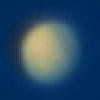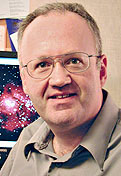 |
|
|
Popular topics on this page:
There is no disk in the drive...
The INI file is corrupt or missing. Please reinstall the OED
Opera Browser users can't change home page or other settings
Customizing the Opera search menu
Audio-Technica AT-PL50 turntable (= Radio Shack 42-7012, Teac P-A688, Sony PSLX250H)
Audio-Technica AT-PL120 vs. Technics SL-1200 series
The end of high fidelity?
The Gospel of Judas
Astrophotos:
Pleiades occultation
Moon (Gassendi, Tycho)
Moon (Aristarchus)
Mars
Saturn
Saturn
Saturn
Scroll down or press Ctrl-F to find other topics, or check previous months.
BOOK SALE - I'm selling off some scholarly books via Amazon Marketplace. Have a look!

|
2006
April
25-30
|
End-of-semester crunch
I'm going to go ahead and close out the month because there won't be time to
write much more until the semester is over. So I'll see you all on May 1 (and post my latest astronomy pictures then).
In the meantime, a few notes...
Astronomy project in progress: Making an ersatz
SBIG eFinder (miniature guidescope)
for my STV autoguider by using a
Meade variable eyepiece projection adapter
(which has T-threads to screw into the STV) and mounting an objective
lens from an old pair of 7x35 binoculars on the front of it.
Pete Albrecht is making the lens mount.
Speaking of astronomy, get out and look at
Comet 73P/Schwassmann-Wachmann if you have a telescope.
It has broken up. Fragments B and C showed up well in my photographs the other night
(C is the brighter one).
If you can't look at it, read about it at the link just given.
For online moon and planet data, including simulated views of the planets,
see calsky.com. Very useful!
And on a completely different subject, some
interesting
comments on immigration from Stephen Bainbridge.
Yes, it's easy to criticize the Bush plan, but can anybody actually come up
with anything better? Other than just "send 'em all back home," which seems to be
popular with the country club liberal crowd?
Permanent link to this entry

|
 |
2006
April
24
|
Disk transplant
 For some time I've been wanting to replace the disk drives in
Minerva
(my main PC at home) to reduce the noise level.
I figured one hard disk would be quieter than two.
For some time I've been wanting to replace the disk drives in
Minerva
(my main PC at home) to reduce the noise level.
I figured one hard disk would be quieter than two.
So when a Seagate 250-GB drive went on sale at Office Max for $90, I snapped it up.
If you're old enough, you remember when Seagate was almost the only brand of
hard disks for PCs. There's a Seagate ST-225, vintage 1987, in HAL, our original
IBM Personal Computer, which still has an honored place in the living room.
Since this drive is bigger than 137 GB, it requires 48-bit sector addressing.
I carefully checked that my motherboard (ASUS P4PE, BIOS 1.002) and operating
system (Windows XP SP2) support 48-bit addressing.
Then I used Seagate DiscWizard
to do the installation. The complete procedure was as follows:
(1) Install DiscWizard from the CD that comes with the new disk.
(2) Remove the old drive D, leaving only the boot disk in the machine.
(3) Install the new disk as the second hard drive.
(4) Use DiscWizard to duplicate the old boot disk onto the new one.
(This is something that can't be done, as far as I know, with the
utilities built into Windows.)
(5) Remove the old disk and put the new one in as primary.
(6) Verify that I can boot from it and the computer works fine.
(7) Temporarily attach the old D drive as the second disk
and robocopy its contents into suitable
directories on the new disk. (This is not a boot disk, so it doesn't need
the ministrations of DiscWizard.)
(8) Remove the old D drive and close up the case.
Surprise: Almost all the whirring noise was coming from the old drive D
(Western Digital, 40 GB, several years old). If I want to, I can put the old drive C back in
(160 GB) without raising the noise level much.
Glitch: The first time I tried to partition the new disk with DiscWizard, it limited
me to 137 GB. Not good. I exited DiscWizard and restarted it.
This time I got a message saying DiscWizard needed to make a registry setting to enable
48-bit support. It did so, rebooted the computer, and worked fine.
Trivial glitches: There were bitter complaints from F-Secure Antivirus 6.01, which
noticed that it wasn't running from its original disk drive. I reinstalled it.
There were also a couple of messages about "Recycle bin on C: is corrupted" or words
to that effect; after emptying the Recycle Bin a couple of times, the problem seems to
have cleared up.
Overall assessment: DiscWizard is easy-to-use and reliable. Copying a boot disk
into a partition of a different size than the original one is non-trivial, but DiscWizard
did it effortlessly. I haven't explored what other useful capabilities it might have.
Permanent link to this entry

|
 |
2006
April
23
|
The end of high fidelity?
One last essay about an audio topic, and then I'll stop.
I think I know what accounts for the snobbery and pseudoscience that has so infected
the world of audio enthusiasts since about 1980.
It's simple but subtle. Ordinary equipment is too good.
In the Fifties and Sixties, most sound systems, even expensive ones, had obvious defects.
Back then, even if you had a pretty good stereo of your own,
you could expect that you would often be
impressed by unusually good sound in a showroom or in a fellow
enthusiast's home.
Not any more. For the last quarter century, stereo amplifiers, preamplifiers,
tuners, etc., have been uniformly good.
None of them has a distinctive sound – and that's the way we want it.
The signal coming out matches the signal going in.
Even speakers are surprisingly uniform if you match them for size and overall
type of design.
So the elusive search for a good-sounding stereo no longer exists.
They're all good.
And that means the experience of being dazzled by someone else's sound system
is basically a thing of the past.
At most, you'll hear minor differences.
And that means a $1000 amplifier is almost indistinguishable from a $100
amplifier – in fact, the superiority of high-end gear is harder and harder
to demonstrate.
But there is still a high-end audio industry.
And there are people still trying to be dazzled by high-end gear.
The trouble is, extremely good equipment today doesn't necessarily look fancy.
Back when a good amplifier cost $300 to build, it would commonly be enclosed
in $50 worth of wood and metal.
Fast-forward to 1995, an amplifier of the same or better quality costs $20 to make,
and – guess what? – it's no longer packaged in chrome and oiled walnut.
If you judge it by its appearance, you may think it's junk.
The result? Subjectivism,
the doctrine that all that matters is the listener's
preference, not electronically or acoustically measurable characteristics.
Audio evaluation becomes a game of self-hypnosis; people try to convince themselves
that the latest new sound system dazzles them just the way something dazzled them
(or their grandparents) in 1965.
Along the way, high fidelity ceases to be the goal.
The goal is no longer the sound of a live performance, but rather
the kind of sound the listener likes, which may include distortion
introduced by vacuum tubes, phono cartridges, or the tricky and highly imperfect
process of manufacturing a vinyl record.
Of course, the atavist doesn't say he likes imperfect sound. He says "digital audio
sounds cold and mechanical" just as people in 1965 said that hum-free transistorized equipment
"lacks warmth" (the warmth being 60-Hz hum).
And then there's pseudoscience and superstition – the $500 power cord that
is supposed to improve the sound of your amplifier, or the specially polished hook-up
wire that gives "warmer sound."
No one claims that these things make any electronically measurable difference.
And if they did, it would beg the question – why not use the special wire
inside the amplifier, not just for the external connections?
Plenty of "audiophools" seem to claim that electrical engineering is bunk.
But if electrical engineering were bunk, they wouldn't have stereo equipment
to be snobbish about.
Permanent link to this entry
Taurine humor
The other day, the four of us were talking about the people who dress up
in unusual costumes and hang out in tourist areas, hoping tourists will
pay for the privilege of taking their picture.
"I once saw a man dressed up as a very fancy Spanish bullfighter,
and you'd never guess where I saw him."
"Where? California? Mexico? Paris?"
"Rome. On the steps of the Vatican."
"Aha," said Melody, "he must have been there for the papal bulls."
In case you're wondering, a particular kind of papal decree is
called a bull because it is signed with the
Pope's bulla, a type of metal seal.
It has nothing to do with cattle.
Permanent link to this entry

|
 |
2006
April
21-22
|
Separated at birth?
Audio-Technica AT-PL120 and Technics SL-1200 series turntables


One of the most highly regarded turntables still being manufactured is the Panasonic Technics
SL-1200, which exists in several varieties.
Above, in the first picture, you see the SL-1200MK5, which lists for
$599.95 without cartridge, and which claims to have extremely smooth
performance (0.01% WRMS wow and flutter, up to 0.035% measured other ways).
The second picture is the Audio-Technica AT-PL120, which includes a cartridge,
has considerably fancier speed controls including 78 rpm,
has a built-in preamp,
and sells for about $300 new, although I got mine for $150 refurbished.
But Audio-Technica only claims "less than 0.2%" wow and flutter, which is not impressive –
in fact, it's right on the borderline of what's acceptable.
My tests show that its actual performance is apparently a good bit better.
Look at the pictures and
notice the great similarity in the tone arm and most of the switches.
Except for the switches that have to be different because of the different
speed control scheme, all the visible parts match!
The AT-PL120 is made for Audio-Technica by someone else (they don't say who).
I deeply suspect that the AT-PL120 and the Technics SL-1200 series
are nearly twins, made in the same factory, and that Audio-Technica's
0.2% wow-and-flutter rating is not a measurement, but rather a maximum
allowable specification that the product had to meet.
In fact, 0.2% is the maximum allowable in tape recording, and someone
may have written down the same number when specifying a turntable, even
though turntables are normally a good bit smoother than tape recorders.
I think I've also seen very similar-looking turntables under the Rek-O-Kut name.
Someone more determined than myself can track them all down.
An idea I haven't tried yet: The Technics manual says that Technics' impressive
wow-and-flutter measurement of 0.01% was determined by measuring the motor speed
electronically while not playing a record. On the Audio-Technica, the motor speed
signal (apparently a square wave) is brought out for use with an external pitch
display. I can hook it up to a soundcard and measure wow and flutter that way.
It's not at all surprising that they can achieve 0.01% with no load.
Sir Isaac Newton told us long ago
that anything will move uniformly unless interfered with.
Permanent link to this entry

|
 |
2006
April
19-20
|
The worst song of the 20th Century
CNN is taking a survey,
and their writer opines that the worst popular song in living
memory is
Bobby Goldsboro's "Honey" (1968).
I think he's absolutely right, and in case the CNN story isn't still
on line by the time you read this, let me summarize it.
The song is a tear-jerker about a young man whose wife has recently died.
In the song, he alternates mourning her and making fun of her ("kinda dumb and
kinda smart," etc.).
And what kind of husband wouldn't be at his wife's bedside
when she dies?
Melody and I both remember jumping up to change the station whenever
that song came on the radio.
Permanent link to this entry
Short notes
Google Ads: Experimentally, I'm letting Google use some space to put paid
ads on this page. I will monitor carefully whether the ads are appropriate.
If you see anything particularly unsuitable, please e-mail me. Note that they're
not my ads and I don't control them.
[I removed them April 30. They were making me less than $1 per week,
and for the most part, I had no idea who the advertisers were, or whether they
were trustworthy.]
I-bonds no longer so hot:
Last October 31, I noticed that the
interest rate on Series I Savings bonds
was going to be unusually high because of recent inflation.
So I bought some bonds and happily collected (I think) 6.93% for six months.
Now they're adjusting the rate, and unfortunately, there's been
slight deflation since the last time the rate was set.
So the rate is about to plummet, probably to 1.1% in my case.
Still, the average over the whole year is decent. And there's a silver lining.
After holding the bonds for 1 year, I can cash them if I want to,
forfeiting the last 3 months' interest.
In this case that won't be much to forfeit, since nearly all the interest
came during the first 6 months.
DNSstuff.com: Here is a useful
set of tools for testing Internet connections, tracing routes, identifying sites, and so
forth. Try it! The upper right-hand corner of the page should tell you where you are,
even before you press any of the buttons.
Permanent link to this entry

|
 |
2006
April
18
|
Miscellany
Weird machine: If you like internal combustion engines,
then you've got to see the
Napier Deltic.
Simple, elegant, and as strange as anything I've ever seen!
Thanks to Jeff Duntemann for referring me to it.
Non-bargain of the day:
a $595
power cord for your stereo.
If that's too pricey for you, consider
this $470 one.
There's no evidence that either of these can affect the sound quality at all. (The rest
of the wiring in your house isn't special, so why should the last 3 feet make such a difference?)
If a difference could be demonstrated somehow, then even if it's too small to hear, I would grant that
some people might hear it.
(See Douglas Self's
essay on subjectivism.)
But I'll bet no difference can be objectively shown to exist at all.
I should add that not everything from this vendor (acousticsounds.com) is snake oil.
Most of their products are undeniably respectable, and some are actual bargains,
such as
this
well-regarded Grado cartridge.
Interesting music: I recently bought (secondhand, locally) the vinyl version of
this audio CD,
a synthesized performance of music by Rameau in the style
of Switched-On Bach, but, in my opinion, better.
Follow the link and listen to the samples.
Permanent link to this entry
Segregation alarm
Did CNN run its April Fool story two weeks late?
Why is it all right for Omaha to
segregate
its public schools by ethnicity
when the South was forced by the federal government
to spend the 1960s and 1970s dismantling a
segregated system, even if it meant severely lowering educational standards,
and the South still under court supervision to make sure segregation
doesn't reappear?
It isn't all right.
Those Nebraskans don't seem to have paid
attention to the
Supreme Court.
Racially segregated public school systems are illegal in the United States.
As part of the generation that endured desegregation – which forced
schools to merge, created overcrowding, and lowered the quality of life of students
of both races – I'm going to have to say that
what's good for the goose is good for the gander.
The South wasn't allowed to maintain racially separate schools on the pretext
that they were technically open to all races. Why let Omaha?
Admittedly, there's something to be said for customizing education
to the needs of different groups.
And we might even have to admit, based on the Omaha incident, that
segregation is not necessarily the product of cruel racism.
It can come from well-meaning attempts to help minorities.
But if segregation was a bad thing in 1960, it's a bad thing today.
I think it's doomed to backfire.
If you split schools, you split society.
Do we really want to end up with Hispanic
schools whose students never have to master English and who are not
funneled into the same job market as the Anglos?
I fear that, in general, minorities could be persuaded to
accept very discriminatory practices by people peddling them as
"something special for the minority." Earlier, I've harped on the theme of
anti-feminism
disguised as feminism.
The same thing can happen with ethnicity.
Permanent link to this entry

|
 |
2006
April
17
|
Error message of the day
Windows - No Disk
There is no disk in the drive.
Please insert a disk into drive .
I was getting this error message whenever I logged onto Minerva (my main home machine)
under any account.
The period in the last sentence was exactly as shown – there was supposed to be
a drive letter in front of it, but nothing was there.
Task Manager traced it to csrss.exe, a Windows component, which was misleading.
The culprit was actually QuickTime, and the cure was to
open QuickTime and choose File, Open Recent, Clear Menu.
QuickTime was trying to continue playing something it had seen on a CD that
was no longer in the computer.
Permanent link to this entry
Customizing the Opera search menu
 In the
Opera web browser,
which is one of the best pieces of free software I know of,
there's a search menu for accessing Google and some other things.
In the
Opera web browser,
which is one of the best pieces of free software I know of,
there's a search menu for accessing Google and some other things.
You can customize what's on it.
I customized mine by adding Wikipedia, Microsoft Support, MSDN (the Microsoft
programmers' documentation library), and even an online Bible
(so I can type "John 3:16" in the search box and get the actual verse).
This is done by changing the file search.ini.
This is in Program Files under Opera, and there's also a copy for each
user in Documents and Settings, Application Data.
The locations of these files vary somewhat, so you should find where
they are on your computer before proceeding.
To change the search menu for one user you just save the file into that
user's Application Data in place of the existing one.
To change the search menu for everybody, you save it into the appropriate
place under Program Files, but then each user's existing search.ini must
be deleted in order for the new one to have any effect.
To download a copy of my customized search.ini file,
click here.
[Note added June 24: This does not work with Opera 9.
There, you are supposed to customize the search menu interactively
and I have not yet done so.]
Permanent link to this entry

|
 |
2006
April
16
|
|
Et resurrexit...
On the Feast Day of the Resurrection of Our Lord,
let me refer you to a
humorous – but very to-the-point –
Easter sermon
by
Anglican Bishop N. T. Wright
on why the Resurrection of Christ has to be taken seriously.
Humor on such a solemn holy day? Yes, by all means!
There are those who view the Resurrection as
(among other things) the ultimate practical joke,
the ultimate unexpected triumph of good will and good sense.
The devil thought he had captured the dead Messiah.
But then...
Permanent link to this entry
|

|
 |
2006
April
15
|
Miscellany
April 15 is the anniversary of
the death of Abraham Lincoln,
and
the sinking of the Titanic,
and is the usual deadline for U.S. income taxes.
Three tragedies at once...
Here's an article on
how to get a tax refund that you deserved but didn't collect in a previous year.
Bad idea of the week: Proposed legislation
requiring ISPs to keep copies
of e-mail or web surfing data
even though they no longer need it for their own operations.
Am I the only one who thinks this is completely contrary to the American way?
The excuse, of course, is that it will help crack down on child pornography.
So would any number of other kinds of snooping on innocent people that we don't tolerate.
I'm solidly against the sexual exploitation of children, but
let's not use "child pornography" as a magic phrase to justify anything.
Economic news: The U.S. personal savings rate is going negative.
That is, people are withdrawing more money from banks than they're depositing.
That's probably a bad thing, but at 0.2% interest last year, who can blame them?
However, I don't see many people mentioning a possible
confounding factor, which is that
retired people are supposed to have negative savings.
As the well-to-do retired population increases, this will push the savings rate down,
possibly into negative territory, without indicating anything wrong with the economy.
Permanent link to this entry

|
 |
2006
April
14
|

|
 |
2006
April
13
|
They're practically giving turntables away
Audio-Technica AT-PL50,
a.k.a. Radio Shack 42-7012, Teac P-A688, Sony PSLX250H
[Substantially revised April 14.]
Dying technologies undergo wacky price fluctuations as suppliers alternately
over- and underestimate the falling demand.
 This is a good year to buy a low-end stereo turntable.
A few years ago, there was an upsurge of interest in playing old vinyl records
as people began to realize that not everything was going to be reissued on CD.
Now, major retailers are discontinuing turntables, and there's a surplus.
This is a good year to buy a low-end stereo turntable.
A few years ago, there was an upsurge of interest in playing old vinyl records
as people began to realize that not everything was going to be reissued on CD.
Now, major retailers are discontinuing turntables, and there's a surplus.
I've just bought an
Audio-Technica AT-PL50 for
$49.99 plus shipping (refurbished).
This same turntable, as best I can determine, is also sold as the
Radio Shack 42-7012,
Teac P-A688 (late models),
Sony PSLX250H (probably),
and perhaps others.
This is to replace the vintage 1974 Garrard turntable in my workroom stereo.
The Garrard is an old friend, but it has always had a lot of rumble, and now it's on its last legs.
The worst case would be that I'd make the Garrard last about 5 more years
and then find no turntables on the market when it came time to replace it.
Back in 1974, the old turntable, which was Garrard's cheapest, cost me $52. Today, the AT-PL50
cost me $58.50 delivered. In 1974 dollars, that's about $18.
Overview: The AT-PL50 is definitely a low-end turntable.
Its cartridge is mounted in the tonearm in an unusual way (neither P-mount nor half-inch mount)
and isn't easily replaceable. (The stylus is of course easy to replace.)
Apparently, the built-in cartridge is some variant of
the ubiquitous
Audio-Technica AT3600,
also sold under numerous other brand names.
That cartridge no longer marketed by Audio-Technica but greatly resembles their current
CN5625.
Stylus options:
The specified stylus is the ATN3600L, 0.6-mil conical.
This is interchangeable with several other styli whose designations
begin with ATN3600; see
this handy chart,
as well as a more informative chart published
by Garage-A-Records,
a supplier I heartily recommend.
That's good.
This is the most widely available stylus in the world.
Here is a truly bewildering
list of turntables and cartridges that use it.
In thirty years, when only one stylus is available, this will probably be it.
In fact, a suitable stylus is
available at Radio Shack
and currently stocked in their stores.
[Well, allegedly available. On my first try I didn't find one, and
the sales clerk didn't even recognize the word phonograph. -M.C., April 15.]
[I found it at Best Buy for $22 and Circuit City for $32 and picked up a spare
from Best Buy. -M.C., April 22.]
There's more than one variety of ATN3600 stylus.
One non-obvious substitute (which Audio-Technica endorses)
is the ATN5625AL (0.7 mil conical, alloy cantilever).
There is even an
ATN3600LAXE
elliptical stylus marketed under the Teac name.
How well is the AT-PL50 built?
Well, it's a light-duty turntable.
If you read the reviews on Amazon, you'll see that some people have had mechanical problems.
I haven't. That's one of the advantages of buying a refurb.
It tracks at 3.5 grams (not 2.5 as stated in some documentation),
which means it can track some worn or warped records that
older P-mount cartridges won't track.
The tone arm seems to have no damping built in; there are no adjustments for
tracking force or anti-skating; maybe there is no need for anti-skating since this is a
nearly straight tonearm.
How does it sound? Overall, quite good. There's not much rumble.
The cartridge has as much bass, and considerably more treble, than my aging
Pickering V-15.
I checked this by taking spectrograms of the same passage of music played with
both turntables.
It was a bit sad packing up the Garrard; I don't know whether it will ever be played again.
The last music played on it was the first movement of Bach's
Fourth Brandenburg Concerto, followed by
The Current Event's instrumental
rendition of "Homeward Bound."
Permanent link to this entry
Miscellany, media-related
Free Mozart MP3s:
Classical Radio of Estonia is giving away some good stuff.
Don't let the Estonian web page put you off; most of the musical terminology is quite
recognizable.
Vintage TV commercials:
There's a fine collection on www.roadode.com.
Look at the one for the Polaroid Swinger camera – a commercial I remember from 1966 – and
look for sexual double-entendres (which went right past me back then).
Notice also how little the commercial says about the camera's
ability to take pictures.
There are reports that the Canon EOS 20Da, the special astronomy version of
the EOS 20D, has been discontinued.
Nothing has been announced by Canon USA yet, as far as I can tell.
Permanent link to this entry

|
 |
2006
April
10-12
|
A spooky area on the Moon
 This is the lunar crater Aristarchus, the brightest
(most reflective) area on the visible face of the Moon,
and it has a reputation for strange goings on.
This is the lunar crater Aristarchus, the brightest
(most reflective) area on the visible face of the Moon,
and it has a reputation for strange goings on.
At one time Aristarchus was thought to be an active volcano.
That is no longer the case,
since there is no seismological evidence of active volcanoes on the Moon,
but many observers have reported strange glows, and it's possible that small
amounts of radon gas occasionally break through the lunar surface and raise
small clouds of dust.
It's also possible that there is an unusually smooth, shiny patch of rock
that reflects
sunlight very brightly at one specific angle.
For more about possible transient phenomena in Aristarchus, click
here,
here, and
here.
The picture also shows Vallis Schröteri (Schröter's Valley),
a curious bent canyon. Notice the "cobra head," the fat end of the canyon;
it, too, has a reputation for spooky goings-on.
This picture was taken on the evening of April 10
with my 8-inch telescope and the same video setup as the pictures in
the April 9 entry.
Saturn too:
Of course I couldn't completely neglect Saturn when the air was steady.

Permanent link to this entry

|
 |
2006
April
9
|
Saturn and the Moon
This evening I got a very good crop of astronomical pictures.
All were taken with my 8-inch telescope at the end of my driveway.
All but the last were taken by recording video with a modified
webcam and then using Registax software to select and stack the
best frames.
Here's Saturn, possibly my best shot of it ever:

Note that Ring C is visible as a pale blue glow
(at least if your brightness is turned up high enough), and the dark streak
in Ring A (the Encke Minimum) is clearly visible. I think the asymmetry in it (comparing
one ansa to the other) is genuine.
Then I turned the same setup toward the Moon.
Here's the crater Gassendi with its intricate structure of rilles:

And here's Tycho:

For an encore I decided to take a picture of the full face of the Moon
in the following manner: I put in the lowest-power eyepiece (40mm, 50×),
picked up the Canon EOS Digital Rebel, put on the 28mm lens, set it to
aperture-priority autoexposure ("Av") at f/2.8, held the camera up to
the eyepiece, and snapped away.
Don't laugh – I think the picture came out respectably.
It was processed with Registax and Photoshop.

Permanent link to this entry

|
 |
2006
April
8
|
Not just a trip, an adventure

I've just returned from a 2-day trip to Washington to meet with some colleagues.
(Not the fellow whose house you see in the picture, though; just
academic colleagues.)
Kudos to the
Key Bridge Marriott, which was
overbooked and therefore gave me a free night in another Marriott, plus a free
upgrade to a suite when I got back to their hotel the second night.
We used the parlor of the suite as a meeting room.
The opposite of kudos to U.S. Airways.
I should explain that I flew out of Athens, Georgia, in a small Beechcraft plane
like the one in the picture, and connected to a jet in Charlotte, N.C.,
thereby avoiding the crowded Atlanta airport. The flight up, and the flight
back down to Charlotte, went fine.
In fact, on the Washington to Charlotte flight, I got a first-class seat for
no reason that was clear to me.


But then the misadventure started.
The flight to Athens was cancelled
due to lack of airplanes in working order.
You see one of the defective planes sitting forlorn on
the tarmac at Charlotte in the second picture.
No other flight was going to be
available until 3 days later (!).
So they sent us from Charlotte to Athens in vans,
a somewhat frightening 3-hour ride at 80 mph without
(in my case) a usable seat belt.
Then they deposited us at the Athens airport, which was closed and locked.
No telephones, no taxis, no rest rooms.
Melody and Cathy came and picked me up; I think some of the other passengers
persuaded one of the van drivers to take them into town.
But depositing people outside a locked airport late at night
does not strike me as safe or wise.
Permanent link to this entry
The Gospel of Judas
Note: There have been subsequent reports that the
National Geographic Society's version of the the so-called Gospel of Judas was seriously mistranslated,
and when translated correctly, it is a much less interesting document. See
Dec. 3, 2007.
[Revised May 21, 2006.]
The National Geographic Society has been making headlines with a recently discovered
ancient Coptic document called The Gospel of Judas that gives a new angle on the
betrayal of Jesus. Specifically, it says that rather than being an act of
treachery by Judas, the handing over of Jesus was actually a planned surrender, and
only Judas had been entrusted with the secret.
I suppose the idea that Jesus surrendered voluntarily should be evaluated on its merits.
Unfortunately for this theory, Jesus denies it
(Matthew 26:20-25).
But what are we to make of The Gospel of Judas?
First: If Jesus did surrender voluntarily, it doesn't change Christianity in any
major way. We already knew that He made His sacrifice voluntarily. If you are looking for a discovery
that will knock down Christianity, this isn't it.
Second: Genuine, but genuine what? It seems reasonably clear that this is a genuine
ancient book. But what kind of ancient book? It's apparently not old enough to be
a first-hand account. (It certainly wasn't written by Judas, who killed himself very
shortly after the betrayal.)
Much of the doctrinal
content of this book is standard Gnosticism, a rival religion
that tried to co-opt Christianity in the second and third centuries.
The book is just another volume of Gnostic
fiction or fantasy; many are already known.
For that reason, I want to point out that it is not a major discovery
and doesn't revolutionize anything.
For a well-informed
response to The Gospel of Judas by an erudite Catholic scholar,
click here.
As for myself, I'd like to raise two points of logic – no, three.
First, the mass media seem to assume that we're supposed disbelieve the New Testament
because it was written 30 to 90 years after the events, but believe other ancient documents
that were written much later. Why? Merely because they contradict the New Testament?
That is not an unbiased position.
Second, the New Testament wasn't written by a single author, nor are its origins mysterious.
It is a collection of books the early Christians considered reliable.
We're not going to find other ancient books that say the same thing, because any books
that did so would have made it into the collection.
Third, as N. T. Wright is fond of pointing out,
there are lots of popular books debunking Christianity, but they all say different things.
If historians were reaching a consensus that Jesus wasn't real, we should pay attention.
But there is no such consensus. Instead, there are, as St. Paul put it,
people with itchy ears,
and no conspiracy theory is too weird for some of them.
Permanent link to this entry
Miscellany
Entertaining reading for gadgeteers:
The Make Magazine Blog.
Scroll all the way down, and come back frequently.
Many of the gadgets are very funny.
If you have a clear sky and a telescope, look for
Comet 73P/Schwassmann-Wachmann,
which is
breaking up into multiple comets.
I'll post pictures here as soon as I have any.
In the meantime, check the information
from NASA
and Sky
and Telescope.
Hazards of a small vocabulary:
Melody recently watched, with some amusement and dismay, an
online brawl involving people who
thought the word lifestyle meant 'homosexuality.'
The two sides talked past each other very angrily
until somebody figured out what was going on.
And of course figuring it out didn't stop it.
Today's bad science award goes to the spiel about oxygen
that Jeff Duntemann quotes
here
(scroll all the way down).
If the air had really been 40% oxygen mere "hundreds of years ago," lots of species
would have died out during its recent precipitous drop.
I hasten to add that when oxygen was first discovered, about 250 years ago,
air was immediately found to be 20% oxygen, the same as now.
Permanent link to this entry

|
 |
2006
April
5-7
|
Calendrical checkpoint
I've just let the magical moment of
01:02:03 on 04/05/06
slip by unnoticed about ten minutes ago. Of course, that's only if you write the date
American style (month/day/year). For us purists, who always write the largest
unit first, the moment we're waiting for is
06/05/04 03:02:01
which is 3:02:01 a.m. (UT of course) on 2006 May 4.
Permanent link to this entry
Mars and Saturn
Last night I did a bit of imaging using the new laptop with my 8-inch telescope
and webcam. Each of the following was over 1000 frames of video, selected and
stacked with Registax.
Mars is much farther away than last autumn:

This is to the same scale as my
other Mars pictures.
Saturn was a fine sight. I had unusually steady air as Saturn passed nearly
overhead right at sunset. Here's the picture, with the contrast enhanced.
The graininess is due to the camera.

The bright spot on the rings near the shadow of the ball is an image processing artifact.
Permanent link to this entry
Want to calibrate your monitor, printer, and scanner?
I've decided to sell my Monaco Optix colorimeter and software.
This is a photoelectric gadget that measure the color of your computer screen,
then works with your scanner and printer to calibrate all three.
Click
here
for general information and
here
for a direct link to mine, which is for sale through Amazon.
[Sold already. That was fast! – M.C., Apr. 5, 10:37 a.m.]
I'm selling it because I get good results calibrating "by eye," which apparently is not the case
for everyone. Most people get hopelessly lost when they try to calibrate
by eye. I never tried my hand at color printing in a darkroom; maybe I would
have been good at it. I'm good at mixing paint.
Of course, to comply fully with Monaco's license, I will discard all the color profile files
generated with the colorimeter.
I have a very busy few days coming up. More soon, and I'll reveal what I was busy with!
Permanent link to this entry

|
 |
2006
April
3-4
|
If you're going to break your arm in June,
notify the College Board now
Sharon has come down with a bad case of carpal tunnel syndrome and is having
to do all her writing with her left hand.
We are trying to get the College Board to give her some extra time on upcoming
AP exams and the SAT.
Their response strikes me as something out of another universe.
They say the deadline has passed to notify them of injuries
affecting exams in May.
What happens if somebody breaks his arm on May 1 and is scheduled for an
exam on May 2?
Permanent link to this entry
Yet another scam to beware of
We have a thriving local chapter of
Freecycle,
an organization that helps people give their unwanted possessions
to people who want them.
This is what you do with used lawn furniture or anything else that is
too bulky to sell on eBay, but too good to put in the trash.
From the local moderator comes a warning about something I wouldn't
have thought of:
Do not accept an invitation to come and take anything you want from
a particular address or location.
Always make personal contact with the person who is giving it away.
The reason?
The offer could be malicious, from a hostile person who doesn't even
live there.
Permanent link to this entry

|
 |
2006
April
2
|
Occultation of the Pleiades
Despite high, thin clouds, I got a couple of reasonably good pictures
of last night's passage of the moon in front of the Pleiades star cluster.
Both of these were taken with a Canon Digital Rebel, then converted to
black-and-white and given considerable processing in Photoshop.
The first was taken at the main focus of a Celestron 5; the second,
through a 400-mm lens at f/8.


You can see plenty of "earthshine," illumination of the dark side of the moon
by light reflected from the earth.
Permanent link to this entry
"The INI file is corrupt or missing.
Please reinstall the OED."
I keep finding software that
doesn't run on
properly secured Windows systems,
and my latest catch is the
Oxford English Dictionary, Second Edition, v.3.0.
(I see there is now a Version 3.1, so maybe they've fixed it.)
The error message that I just quoted occurs because every time this program runs,
it wants to write on C:\WINDOWS\OED.INI (or C:\WINNT\OED.INI on some systems).
This is a file that ordinary users don't have permission to write on.
The OED's support web site says
there is no way to fix the problem.
Wrong.
The fix is very simple.
Log on as administrator, find that file, and give "Full Control" to "Users."
Problem solved, with no real harm to the security of the machine.
Permanent link to this entry

|
 |
2006
April
1
|
Look at the sky this evening
Between 7 and 9 p.m. this evening, as seen from the Southeast,
the thin crescent moon will pass in front of the
Pleiades star cluster. With binoculars or a small telescope,
you can watch the stars pop out of view one by one; they disappear suddenly
behind the sharp, airless edge of the moon.
It should be a spectacular sight.
More details
here
and
here.
And no, this isn't an April Fools' Day hoax.
Permanent link to this entry
Not hoaxes, but I wish they were...
Three current news stories sound like they should have been datelined
April 1 but weren't:
Permanent link to this entry
New laptop report
The bad thing about getting a new computer is that moving into it is almost as much work
as moving into a new house.
But the good thing is that you get to make a few simplifications and improvements.
The display on this new Dell D610 was a bit pale and bluish until I activated
Adobe Gamma. That's a product that comes with Photoshop but is no longer installed
by default. Look for it in
C:\Program Files\Common Files\Adobe\Calibration
and also in Start,
Programs, Startup. The launcher, in the Startup folder, won't launch anything unless
it's been configured. You configure Adobe Gamma using the .CPL file under Calibration.
Then it loads every time you log on.
The way Adobe Gamma works is that you set it up by looking at several patterns of stripes
and solid colors. Take your glasses off and adjust the solids so they match the blurred
stripes. The idea is that a set of narrow stripes, half black and half 100% brightness,
should look like a solid patch of 50% brightness. If it doesn't, the gamma
(contrast) needs adjusting.
I did this for all 3 primary colors, which is optional, and it really helped.
If you don't have Adobe Gamma, you may have some suitable adjustments under Display,
Properties, Settings, Advanced. Many video cards provide adjustments of this kind.
Another improvement I made was to choose Georgia instead of Times New Roman as
the default proportional font for viewing web pages. I did this in Opera Browser.
It's a lot more readable. Of course, it also exposes minor layout problems in web pages
where the designer assumed you'd have Times New Roman but never specified it.
For some reason Crimson Editor is much faster saving files through the network.
I must have gotten a new version without quite realizing it.
The lab technicians set up much of the software before issuing the machine to me.
Permanent link to this entry
Opera Browser users cannot change home page or other settings
The cause of this problem turned out to be the file
C:\WINDOWS\SYSTEM32\OPERA6.INI,
which contains un-changeable settings for all users.
At the AI Lab, we were originally using Opera 6,
which didn't store individual users' settings separately.
So we locked down a lot of the settings by means of this file,
so they'd never change, and then forgot about it.
Opera 8.5 is fully aware that Windows is a multi-user OS,
but this old file was still having its intended effect.
Since Opera is designed to work well on kiosks and public-access machines,
it has to be able to be locked down this way.
The Opera browser
is free from www.opera.com.
I use it instead of Internet Explorer because it has tabbed browsing and
fewer security hazards.
Permanent link to this entry

|
 |


![]()
 For some time I've been wanting to replace the disk drives in
For some time I've been wanting to replace the disk drives in


 In the
In the
 This is a good year to buy a low-end stereo turntable.
A few years ago, there was an upsurge of interest in playing old vinyl records
as people began to realize that not everything was going to be reissued on CD.
Now, major retailers are discontinuing turntables, and there's a surplus.
This is a good year to buy a low-end stereo turntable.
A few years ago, there was an upsurge of interest in playing old vinyl records
as people began to realize that not everything was going to be reissued on CD.
Now, major retailers are discontinuing turntables, and there's a surplus.
 This is the lunar crater Aristarchus, the brightest
(most reflective) area on the visible face of the Moon,
and it has a reputation for strange goings on.
This is the lunar crater Aristarchus, the brightest
(most reflective) area on the visible face of the Moon,
and it has a reputation for strange goings on.











